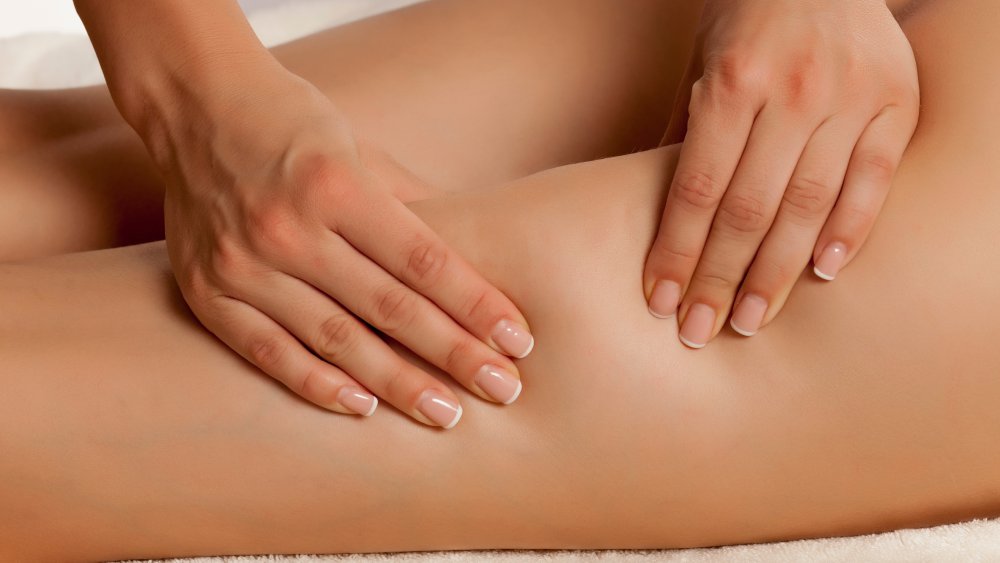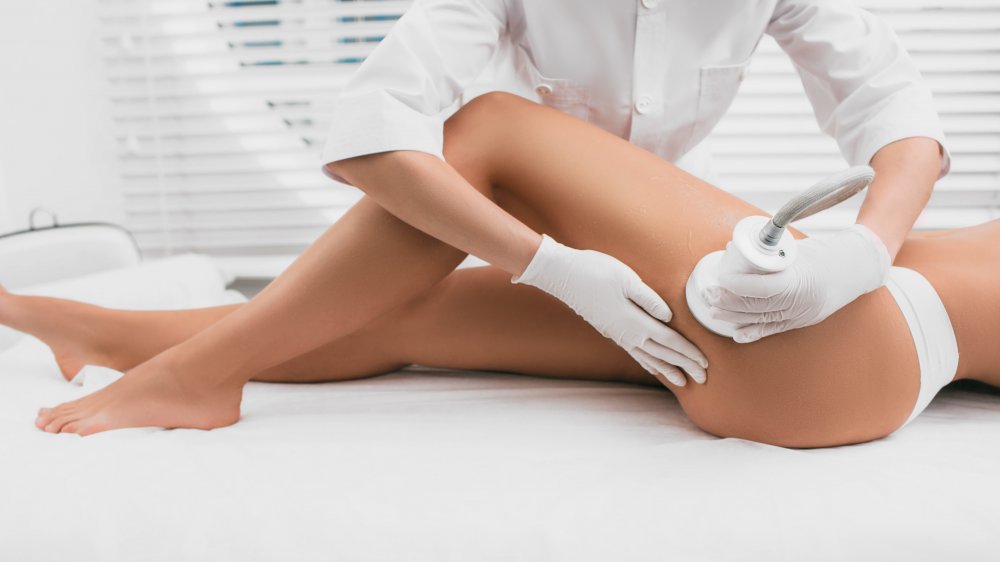The Untold Truth Of Cellulite
There are a number of reasons why women don't think they look good in shorts or mini skirts, and one of those reasons could be cellulite. According to Healthline, cellulite happens when the fat beneath your skin pushes up against the connective tissue, making it look dimpled, bumpy, and giving it the appearance of an orange peel. Because it happens in the parts of our bodies that have more fatty tissue, cellulite usually shows up around our thighs and buttocks. In case you're wondering whether cellulite is age-related, Heathline notes that more than 85 percent of women over 21 have it.
We all have a relationship with cellulite — and that relationship probably isn't good. But according to Refinery29, it never used to be this way. That's because before the 20th century, body fat was considered a sign of prosperity. That slowly began to change in the late 1800s, with the birth of France's beauty institutes, and in 1933, a publication named Votre Beauté called out what one Dr. Debec said was a combination of "water, residues, toxins, fat" but was different from fat because it was difficult to get rid of. He called it "cellulite."
Can you get rid of cellulite?
Refinery29 reports that it wasn't until 1968 that American women were introduced to the dreaded dimply skin in a piece which Vogue published called "Cellulite: The Fat You Could Not Lose Before." The article claimed that if you were diagnosed with it, you could get rid of it through diet, exercise, and with the help of a special rolling pin.
Today we know that certain creams and treatments might reduce the appearance of cellulite, but cosmetic surgeon Dr. Robert Centeno told Byrdie that these treatments can only work if you use them continually. Modern medical science has also found an explanation as to why cellulite seems to favor women. As Dr. Centeno says: "Women have fewer and vertically-oriented fibrous attachments that connect the skin through the fat to the underlying fibrous layers and muscles than men."
Dr. Centeno says the best way to deal with cellulite is by keeping fit, but he also warns that women cannot ignore the role genetics plays in its appearance. "Maintaining a healthy lifestyle is the best way to reduce your risk of forming cellulite or it worsening, but these practices cannot completely overcome a genetic predisposition. There is a genetic and anatomic predisposition to getting cellulite which can occur even if your diet and exercise religiously," he says.

